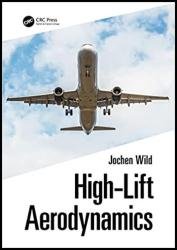High-Lift Aerodynamics
- Добавил: literator
- Дата: 31-12-2021, 04:52
- Комментариев: 0
 Название: High-Lift Aerodynamics
Название: High-Lift AerodynamicsАвтор: Jochen Wild
Издательство: CRC Press
Год: 2022
Страниц: 308
Язык: английский
Формат: pdf (true)
Размер: 18.6 MB
This book presents a detailed look at high-lift aerodynamics, which deals with the aerodynamic behavior of lift augmentation means from various approaches. After an introductory chapter, the book discusses the physical limits of lift generation, giving the lift generation potential. It then explains what is needed for an aircraft to fly safely by analyzing the high-lift-related requirements for certifying an aircraft. Aircraft needs are also analyzed to improve performance during takeoff, approach, and landing.
The book discusses in detail the applied means to increase the lift coefficient by either passive and active high-lift systems. It includes slotless and slotted high-lift flaps, active and passive vortex generating devices, boundary and circulation control, and powered lift.
Describing methods that are used to evaluate and design high-lift systems in an aerodynamic sense, the book briefly covers numerical as well as experimental simulation methods. It also includes a chapter on the aerodynamic design of high-lift systems.
High-Lift Aerodynamics deals with the aerodynamic behavior of lift augmentation means, mainly named high-lift devices. It is a subset of the aerodynamics of flying vehicles at relatively low speed. Within this work, the focus is put on civil transport aircraft application, although the associated physics apply to any other aircraft, too. Nevertheless, the naming High-Lift Aerodynamics does not fully describe the aim of the associated technology. High-lift devices are mainly applied to reduce the speed of an aircraft during take-off and approach. Since the aerodynamic lift force in steady non-accelerated flight is equal to the weight of the aircraft, it is not directly the lift force that has to be increased but the aerodynamic lift coefficient – and therefore the minimum speed to the maximum achievable lift coefficient. The correct naming of the subject would therefore be High Maximum Lift Coefficient Aerodynamics. But this terminology has never been used for simplicity.
Features:
Provides an understanding of the physics of flight during takeoff and landing from aerodynamics to flight performance and from simulation to design
Discusses the physical limits of lift generation, giving the lift generation potential
Concentrates on the specifics of high-lift aerodynamics to provide a first insight
Analyzes aircraft needs to improve performance during takeoff, approach, and landing
Focuses on civil transport aircraft applications but also includes the associated physics that apply to all aircraft
This book is intended for graduate students in aerospace programs studying advanced aerodynamics and aircraft design. It also serves as a professional reference for practicing aerospace and mechanical engineers who are working on aircraft design issues related to takeoff and landing.
Скачать High-Lift Aerodynamics
Внимание
Уважаемый посетитель, Вы зашли на сайт как незарегистрированный пользователь.
Мы рекомендуем Вам зарегистрироваться либо войти на сайт под своим именем.
Уважаемый посетитель, Вы зашли на сайт как незарегистрированный пользователь.
Мы рекомендуем Вам зарегистрироваться либо войти на сайт под своим именем.
Информация
Посетители, находящиеся в группе Гости, не могут оставлять комментарии к данной публикации.
Посетители, находящиеся в группе Гости, не могут оставлять комментарии к данной публикации.
